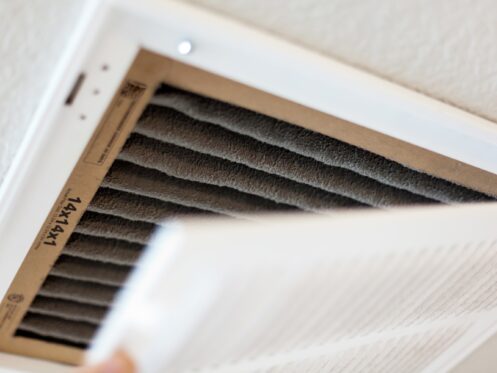In a world where indoor air pollution is becoming a growing concern, the quest for clean and breathable air has led many to wonder if air purifiers are worth the cost. In this era of heightened awareness about health and well-being, we find ourselves surrounded by pollutants that can potentially harm our respiratory systems. But can air purifiers truly make a difference? Keep reading as we explore the benefits, functionality, and whether investing in an air purifier is truly worth it.
What Are Air Purifiers and How Do They Work?
Air purifiers are ingenious devices designed to improve the quality of the air we breathe. They are especially beneficial in environments with pollutants, allergens, or unpleasant odors. These devices employ various technologies and mechanisms to effectively remove contaminants from the air, creating a healthier and more comfortable indoor environment.
Filtration
One of the most common methods employed by air purifiers is filtration. These devices typically feature a series of filters that capture airborne particles as the air passes through them. The primary filter used is a high-efficiency particulate air (HEPA) filter, renowned for its ability to trap particles as small as 0.3 microns with an impressive efficiency of 99.97%. These filters consist of densely woven fibers arranged in a pleated fashion, creating a large surface area for air to pass through.
Pre-Filters
Some air purifiers incorporate pre-filters as the first line of defense against larger particles. These pre-filters, often made of foam or mesh, capture larger contaminants like hair, lint, and dust, preventing them from clogging the primary filter. By capturing larger particles, pre-filters enhance the lifespan and efficiency of the main filter, ensuring optimal performance.
Activated Carbon Filters
Alongside HEPA filters, many air purifiers utilize activated carbon filters. These filters are specially designed to tackle odors, gases, and chemicals. Activated carbon is a porous material with an immense surface area created by treating the carbon with high temperatures or chemicals. This extensive surface area enables the carbon to adsorb volatile organic compounds (VOCs), odors, and harmful gases present in the air.
Ionization
Another technology certain air purifiers employ is ionization, which helps remove particles from the air by altering their charge. These devices emit negative ions into the air, which attach to positively charged particles, such as dust, allergens, and bacteria. The particles become negatively charged and are subsequently attracted to positively charged plates or surfaces in the purifier.
Ultraviolet Germicidal Irradiation (UVGI)
Some air purifiers integrate UVGI technology, utilizing ultraviolet (UV) light to neutralize bacteria, viruses, and other microorganisms. UV-C light, with a wavelength of 200 to 280 nanometers, is particularly effective at destroying the genetic material of these harmful pathogens, rendering them unable to reproduce or infect. Air purifiers with UVGI typically include a UV lamp that irradiates the air as it passes through the device, helping disinfect and purify it.
Ozone Generators
It’s worth mentioning that some air purifiers utilize ozone generators. These generators produce ozone molecules, which can neutralize odors and certain pollutants. However, it is important to exercise caution when using ozone-generating air purifiers, as high ozone levels can harm human health.
Air Circulation
Regardless of the specific technology employed, air purifiers rely on efficient air circulation to achieve optimal results. They typically feature a fan or blower that draws air into the device, directing it through the filters or other purification mechanisms. The purified air is then released back into the room, creating a continuous air purification cycle.
Benefits of Air Purifiers
The following are some of the benefits an air purifier offers.
Allergy and Asthma Relief
Air purifiers can be particularly beneficial for individuals who suffer from allergies or asthma. By removing common triggers such as pollen and dust mites, these devices help alleviate symptoms and provide relief. Those prone to allergic reactions will experience a noticeable decrease in sneezing, coughing, congestion, and itchy eyes, enabling them to breathe more easily and comfortably.
Elimination of Odors
Another significant advantage of air purifiers is their ability to eliminate unpleasant odors. Whether it’s cooking smells, pet odors, tobacco smoke, or lingering odors from cleaning chemicals, air purifiers equipped with activated carbon filters effectively capture and neutralize these odorous particles. This feature helps to create a fresh and inviting living space free from unwanted smells.
Increased Energy and Productivity
When indoor air quality is poor, individuals may experience symptoms like fatigue, headaches, and difficulty concentrating. Air purifiers can alleviate these issues by providing a cleaner and healthier environment. By reducing the presence of airborne pollutants, these devices contribute to better sleep quality, increased energy levels, and enhanced cognitive function, leading to improved productivity and overall well-being.
Protection Against Harmful Pathogens
Air purifiers equipped with high-efficiency particulate air (HEPA) filters or ultraviolet (UV) germicidal lamps have the added advantage of removing or neutralizing harmful pathogens like bacteria and viruses. This feature is particularly valuable in shared spaces or during flu seasons when the risk of airborne transmission is higher. Air purifiers can help minimize the spread of illnesses and create a healthier environment for everyone.
Decreased Indoor Airborne Contaminants
Indoor air can be more polluted than outdoor air due to factors like inadequate ventilation, off-gassing from building materials, and indoor activities. Air purifiers combat this issue by actively filtering out harmful particles, reducing the concentration of contaminants in the air. This is especially important for individuals who spend lots of time indoors, such as office workers or those with limited access to fresh outdoor air.
Long-Term Cost Savings
While the initial investment in an air purifier may seem significant, it can lead to long-term cost savings. These devices can extend the lifespan of HVAC systems by reducing the accumulation of dust and other particles, resulting in fewer maintenance and repair costs.
Factors to Consider When Choosing an Air Purifier
Here are some things to keep in mind when purchasing an air purifier.
Cost
Air purifiers can vary significantly in price, depending on the brand, features, and filtration technology. Consider your budget and the ongoing cost of filter replacements to ensure that it is a financially viable option for you.
Room Size and Placement
Air purifiers have different coverage capacities, and it’s essential to select one suitable for the size of the room. Additionally, proper placement of the purifier can optimize its effectiveness.
Maintenance
Air purifiers require regular maintenance, including filter replacements and cleaning. Factor in the time and effort required to maintain the purifier properly.
Get in Touch With Professionals Today!
Are you in need of reliable air conditioning, heating, and indoor air quality services in Carrollton, TX, and the Dallas-Fort Worth area? Dring Air Conditioning & Heating is here to help. With our team of experienced professionals and commitment to customer satisfaction, we provide exceptional services to keep your home comfortable all year round. From installations and repairs to maintenance and upgrades, we have you covered. Moreover, we understand that emergencies can happen at any time, so we offer 24/7 emergency services to ensure your comfort is never compromised. Contact Dring Air Conditioning & Heating today to learn more about our services.







